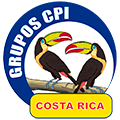Tamu Biomedical group is here!
After a wonderful introduction to the Costa Rican culture and Spanish language, the students were ready and anxious to experience more adventures in the beautiful province of Guancaste, Costa Rica. Texas A&M students arrived to Guanacaste and the peaceful town of Potrero where they would meet the families they are staying with for the following week.
Monday was a day full of learning Costa Rican culture. This program is full of opportunities to learn the characteristics of the country and everything special it has to offer. The students woke up very early and excited to start their first day of classes at CPI, where they met their teachers.
When we refer to the beautiful country of Costa Rica, we not only refer to the mountains, rivers and white sand beaches, but some of the incredible experiences that are unique to this area. We started the week learning about an event that is very famous in Costa Rica and worldwide. After Spanish classes, we rushed back to our house to prepare for this very special event. We traveled to Ostional beach where Texas A&M students were witnesses to an unforgettable experience-some might even say that it’s a once in a lifetime experience. Once we arrived to the beach, some local guides took us to a strategic spot to view the thousands of Ridley sea turtles. We were able to see how the turtles made the journey from the water to the sandy beaches, and how they laid their eggs. It was an incredible experience how all the events take place to watch something so special in a certain place. We had the best luck and we appreciate everything that we saw.
It’s cooking time! Thursday, the group was in charge of cooking their own Costa Rican lunch. Once everyone was prepared for the kitchen, they started preparing the ingredients for a traditional meal called Arroz con Pollo. The cooking class was a total success and students not only learned how to cook but the verbs and ingredient words in Spanish. They enjoyed their hard work and had a delicious meal.
TAMU Biomedical was welcomed to Heredia on a pretty sunny afternoon. The hostfamilies were waiting expectantly at the CPI campus. Everyone was introduced and taken to their respective families. We waved hasta luego and good night to each other and that concluded day one in the Central Valley.
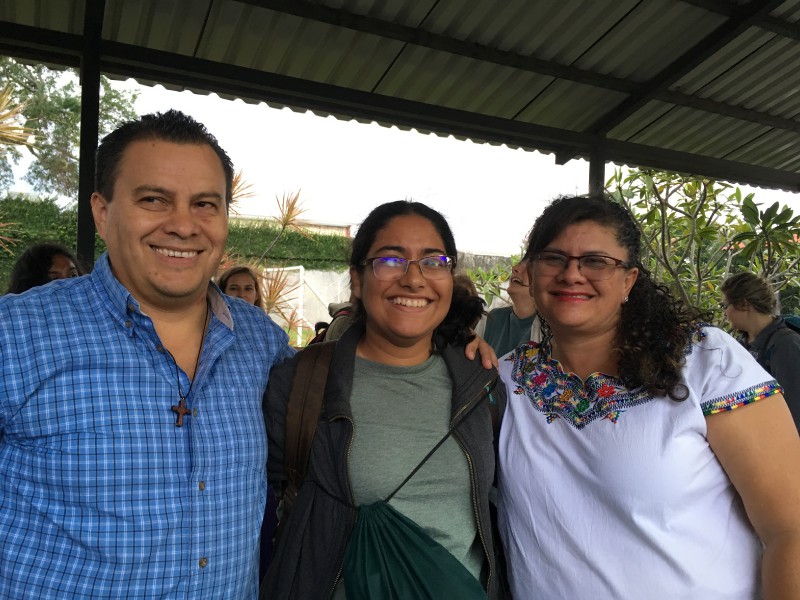
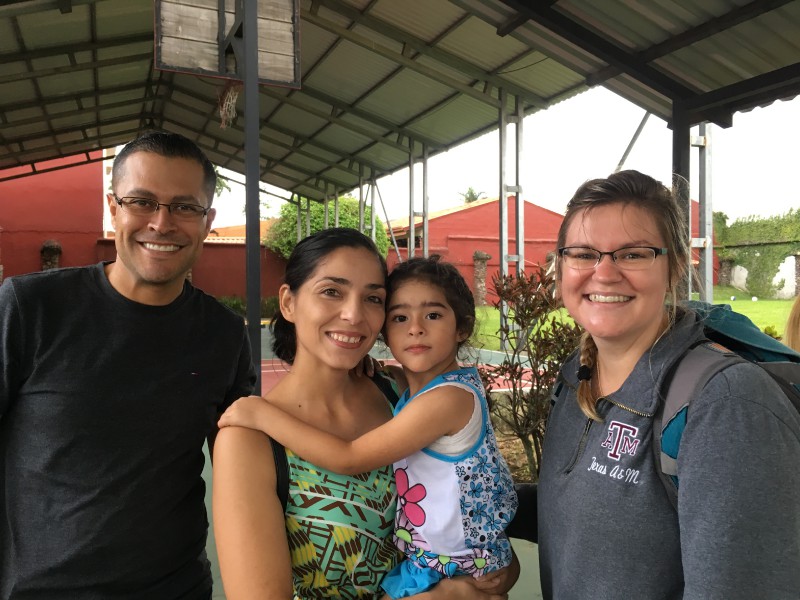
Monday morning dawned hot and bright and everyone was a bit nervous but excited too, to start Spanish classes. The academic morning being over, it was time to cook out lunch. Our lunch was going to be rice and chicken, rice and vegetables, beans, salad, and juice, but first we had to help preparing the rice and all its ingredients, and make the salad. All hands on deck and we got to work! Lunch was yummy, thanks to everyone’s help.
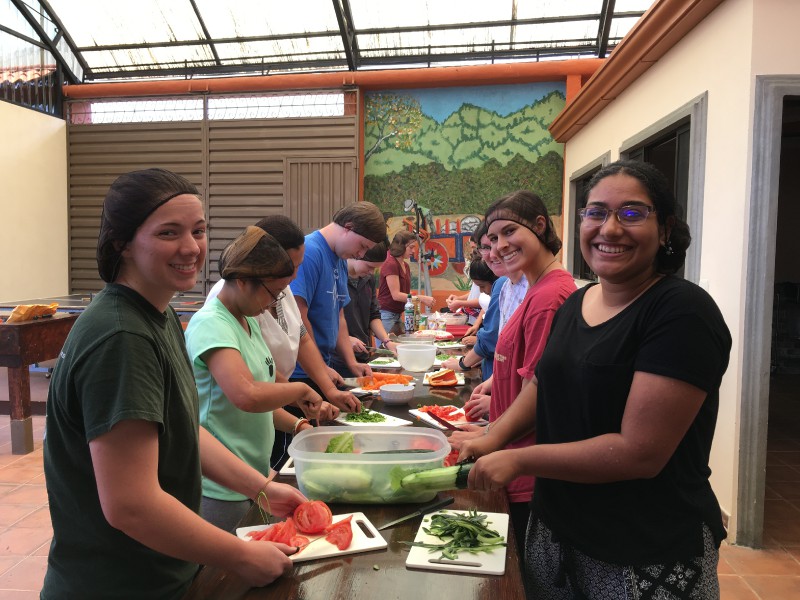
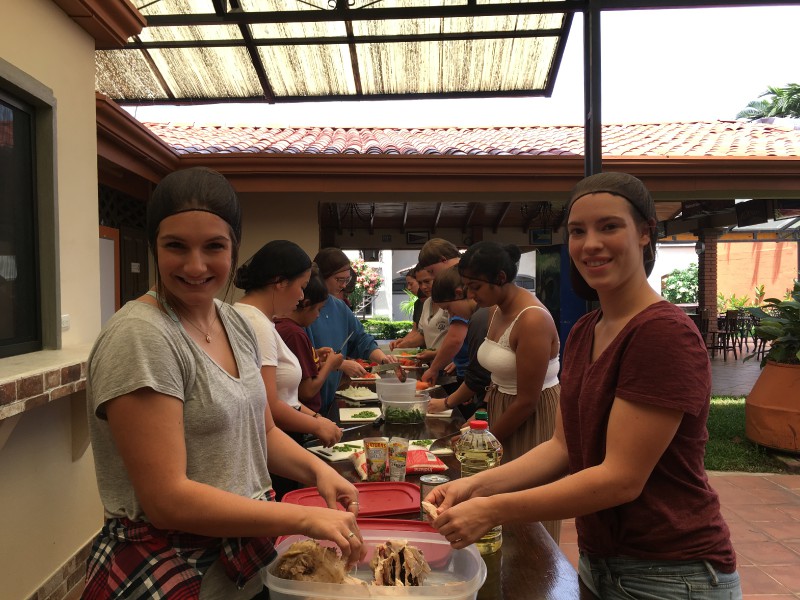
We then walked around the small town of San Joaquín. We saw practical landmarks like supermarkets, ATMs, the town square, soccer field, and a good coffee shop for an afternoon café.
The following day the Spanish classes continued in the morning and lunch was at a local restaurant. From there our driver took us to a super cool veterinary hospital. We were showed around the facility which includes shock room, gastroenterology consult, radiology, physical therapy, operating room, treatment room, lab, and it goes on and on.
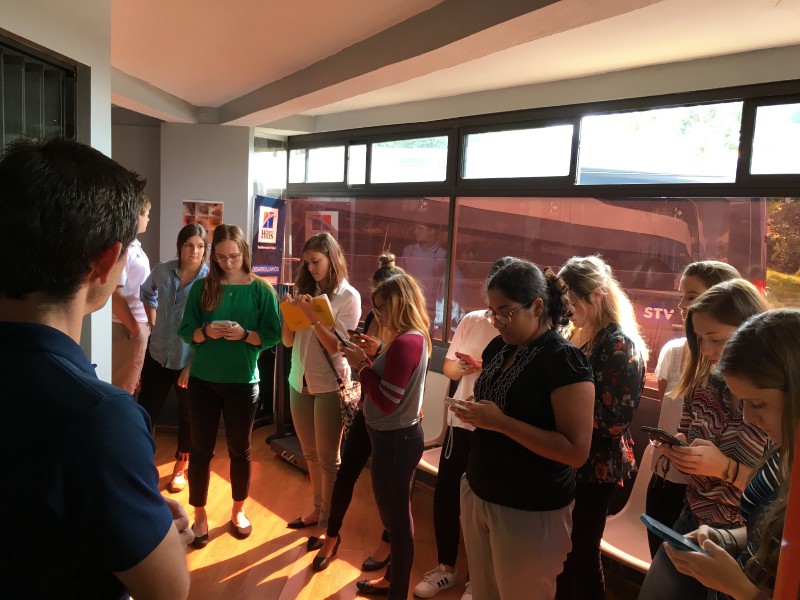
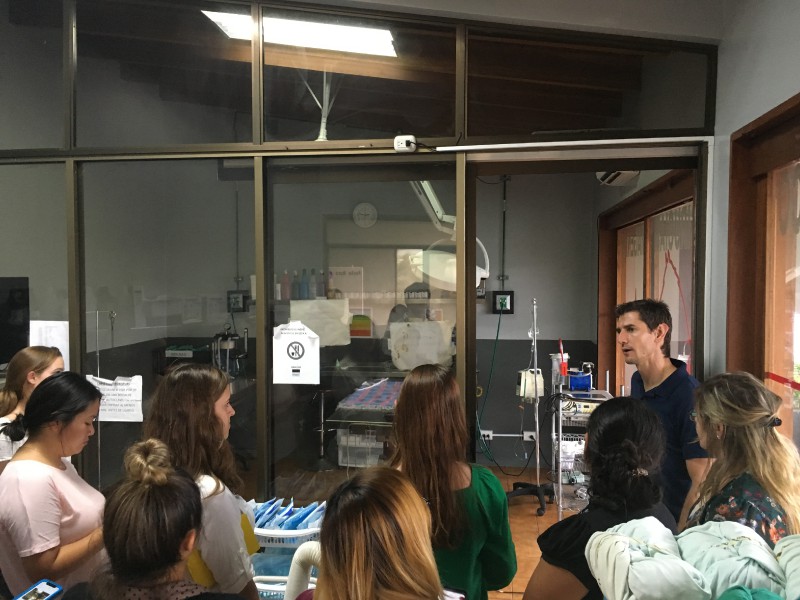
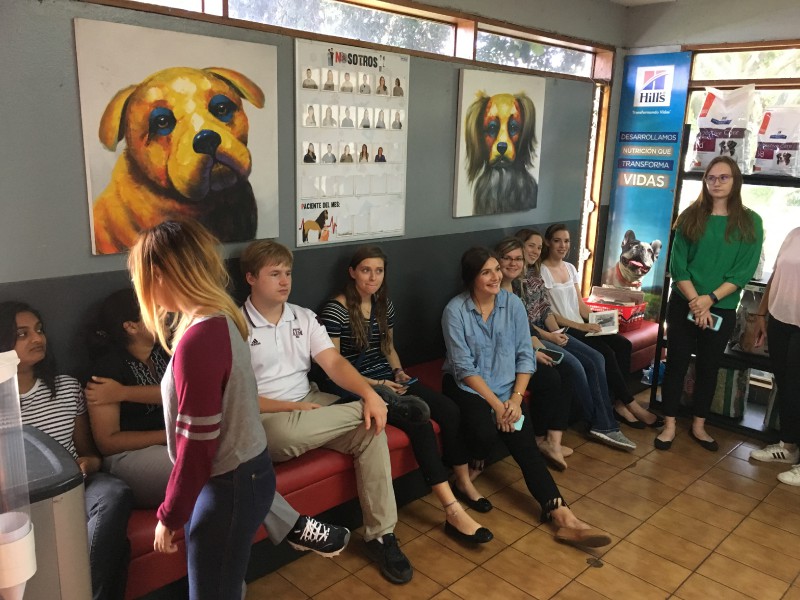
They had several doggie patients, both large and small. We even got to see the stalls and operating room for horses. Equine medicine is another service the Hospital offers.
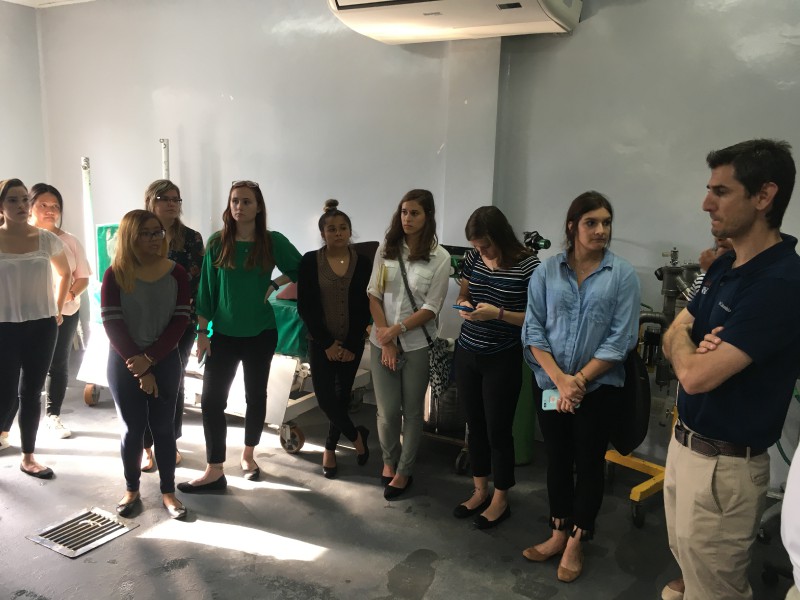
The week progressed with Spanish classes in the morning and visits and tours in the afternoons.
One day we got a the public bus for an adventures ride to the city of Heredia, nicknamed La Ciudad de las Flores. (The City of Flowers) Nicknamed maybe for all its beautiful flowers decorating the houses and yards or perhaps it has to do to the local folklore that says there were two very beautiful sisters and their last name was Flores (meaning flowers). These two sisters attracted much attention so the place became known as the City of the Flores (flowers).
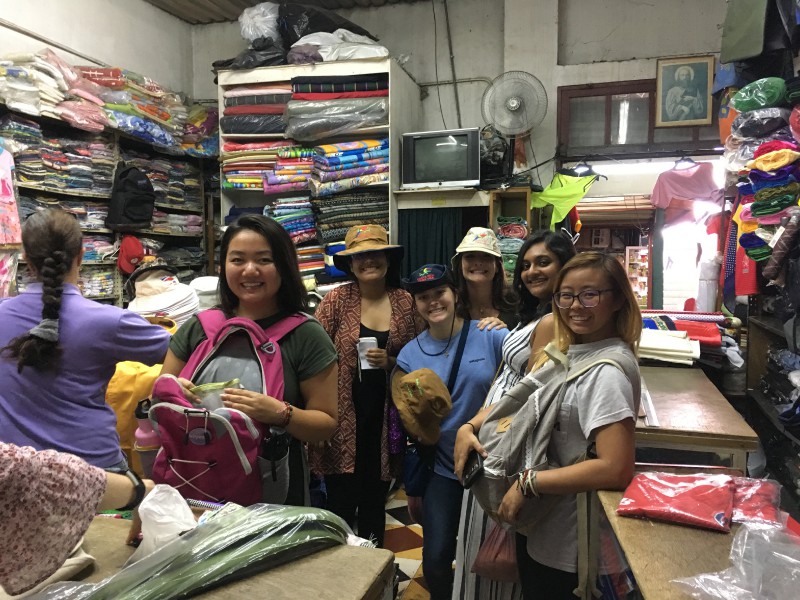
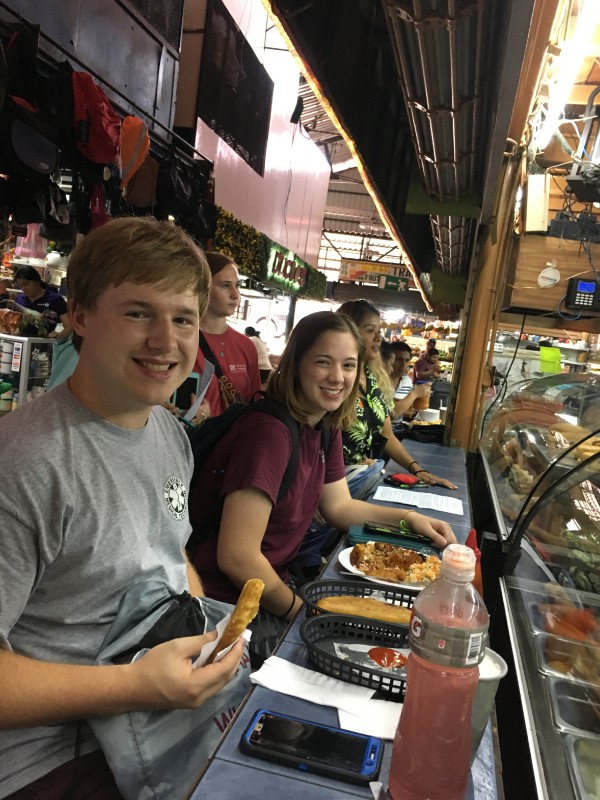
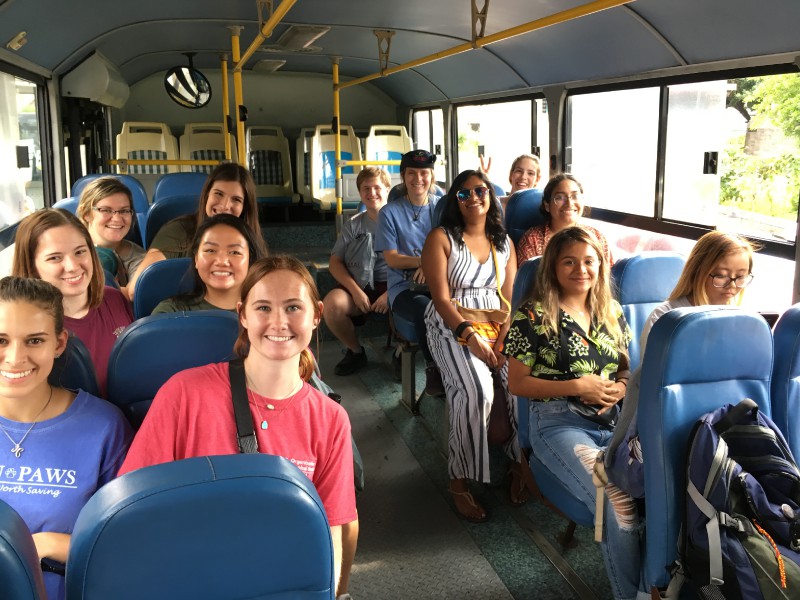
We visited the local market where the sights and smells brought us close to day to day life. The bustling of a local market is a rich cultural experience. Everything is up close and personal, the vendors calling out their wares, eating stands, clothing stores, and fruit and vegetable stands making for a lively and colorful afternoon event.
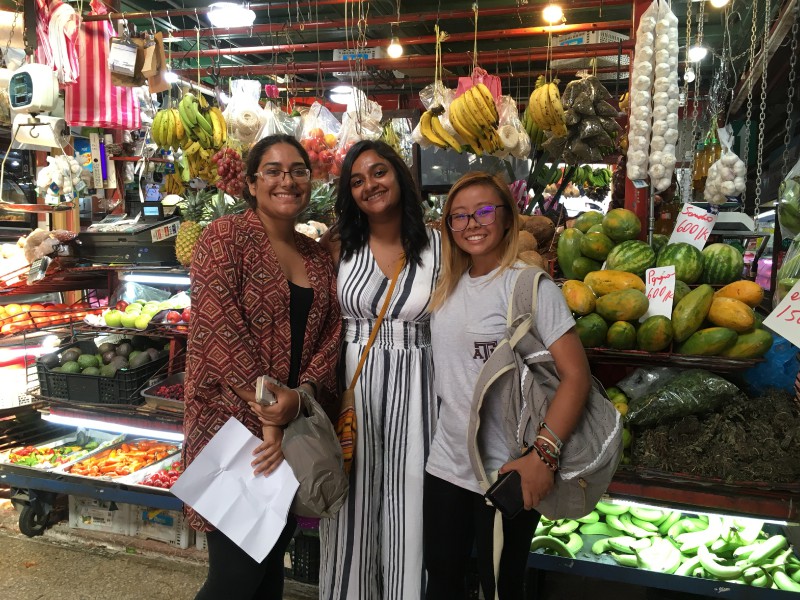
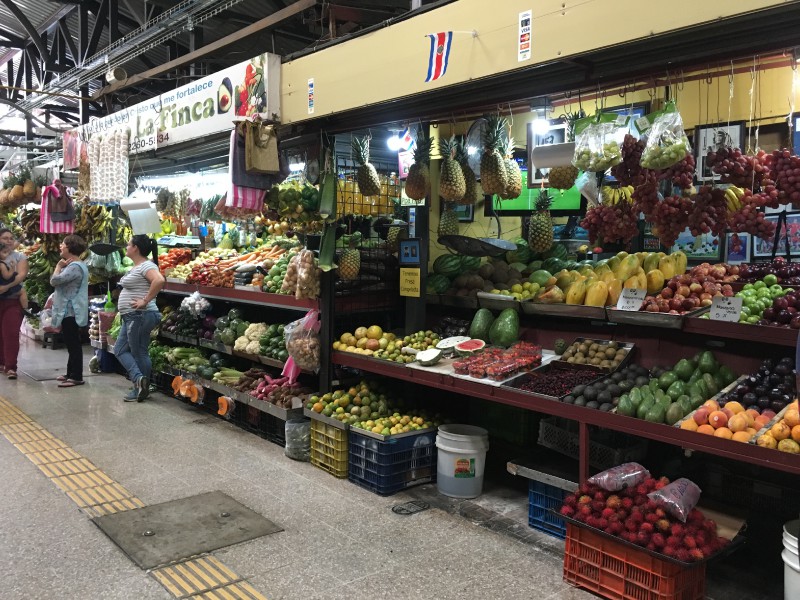
On another afternoon we visited one of the biggest public hospitals in the Central Valley. The Hospital Rafael Angel Calderón Guardia is named after a former Costa Rican president who worked for the rights, education, and health of the people, a very famous civil reformer. This Hospital is a Class A, level three hospital. One of three like hospitals in the Central Valley. Our tour and talk took us to different areas of care. We learned about public health care in Costa Rica, social medicine, the history of the hospital, got to tour different care wings, and see how intricate and complex a hospital this size is.
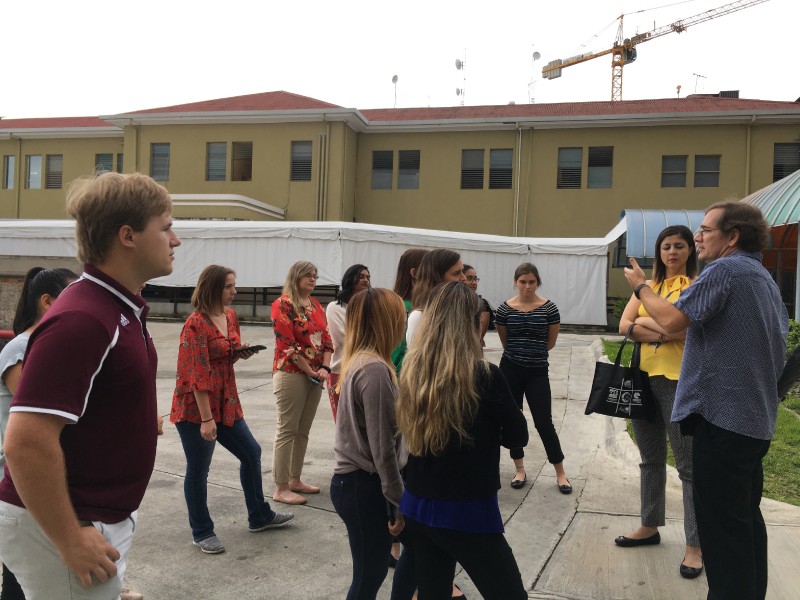
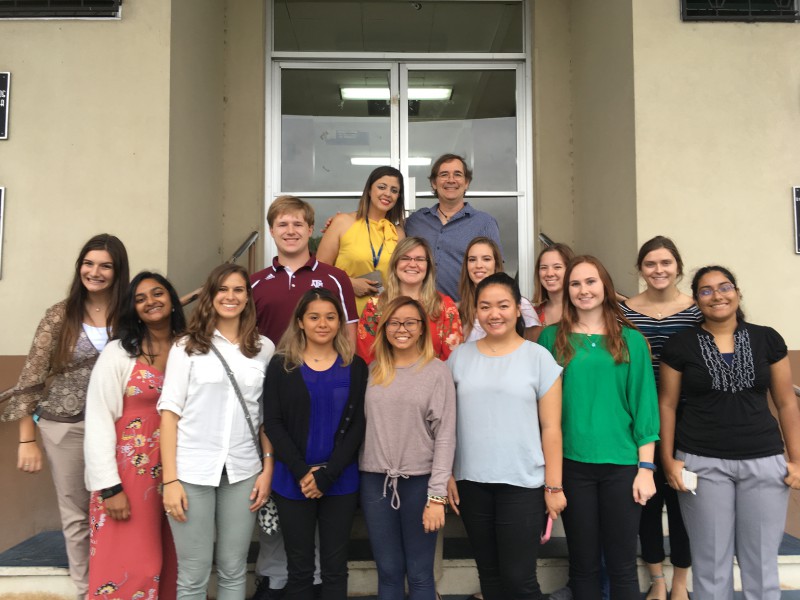
One interesting fact we learned is that since Costa Rica is a predominantly Catholic country the hospital has its own small church/chapel. There is Mass every day and the priests rotate and live in the hospital. So just like a doctor, the priest does his rounds, works, and lives there. Their rotations are a week long.
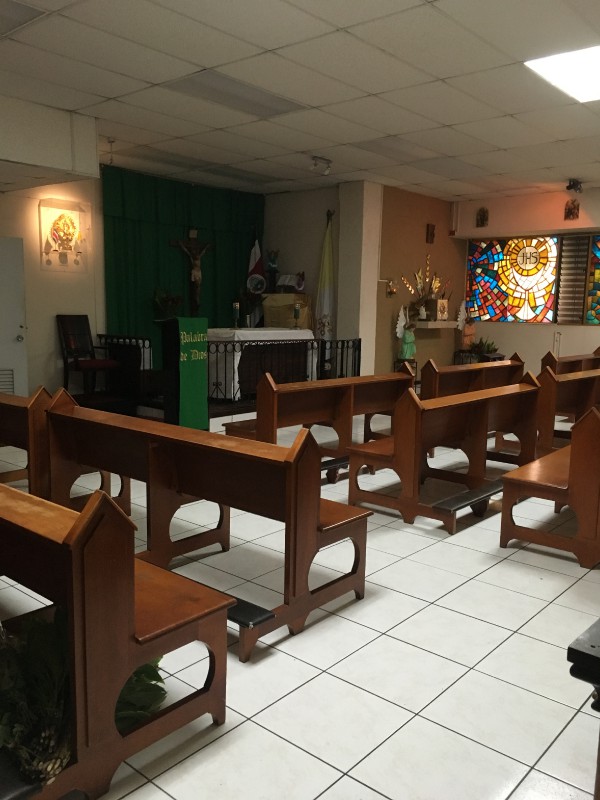
The weekend found us white water rafting on the famous river Pacuare, ranked number four of the world for rafting. It was a long drive in the morning, and breakfast was waiting for us when we got to the operations center. The river was fun; the rapids making for an adrenaline filled morning. We got to experience rapids one, two, three, and a couple of them were even category four! We stopped for lunch and spent some time just chilling at the lunch site. After lunch we got back into our rafts and paddled another hour. Everyone was tired and happy and slept most of the way back to Heredia.
The second week TAMU had Spanish classes, time with host families, academic site visits, and a guest lecturer.
On Monday of this second week dawned bright and warm. Morning Spanish classes started our day and then we got into the van for a visit to one of the Central Valley’s more high scale private hospitals, Hospital CIMA.
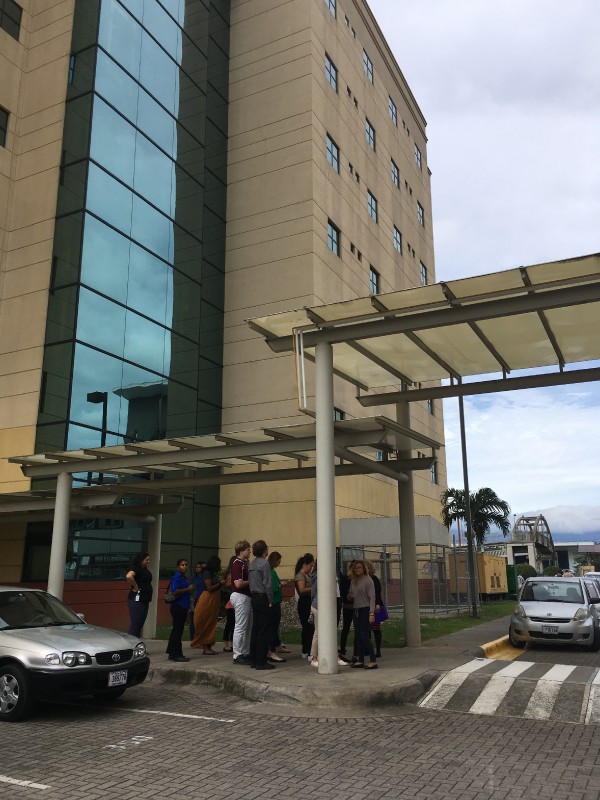
We were met by a staff member who showed us around the hospital and talked about the different services offered, showed us the state of the art equipment, and we got a sense of the similarities and differences between a private hospital and a public one, having already visited the Hospital Calderón Guardia the week before.

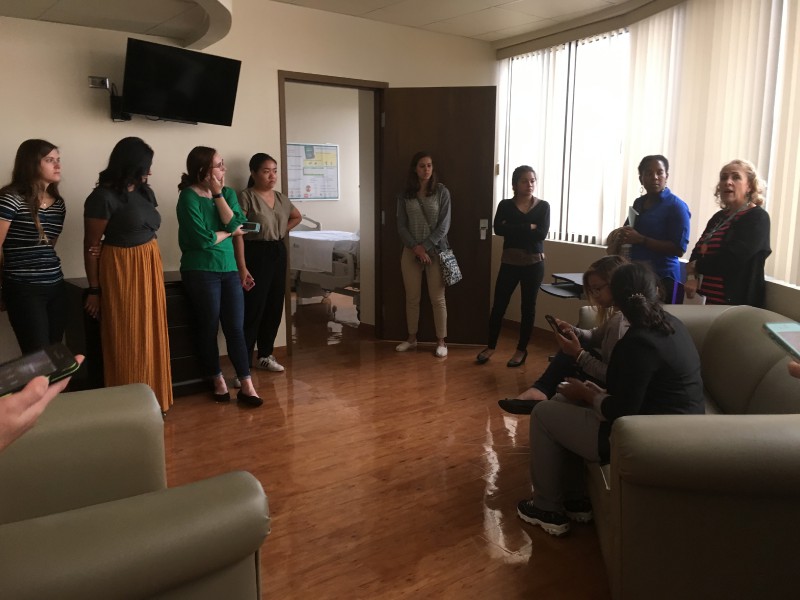
Next on the schedule was Doka Coffee Tour in the foothills of the Central Valley. It was a beautiful sunny afternoon and on our drive we had some spectacular views. After eating a delicious lunch we got a tour of the plantation.
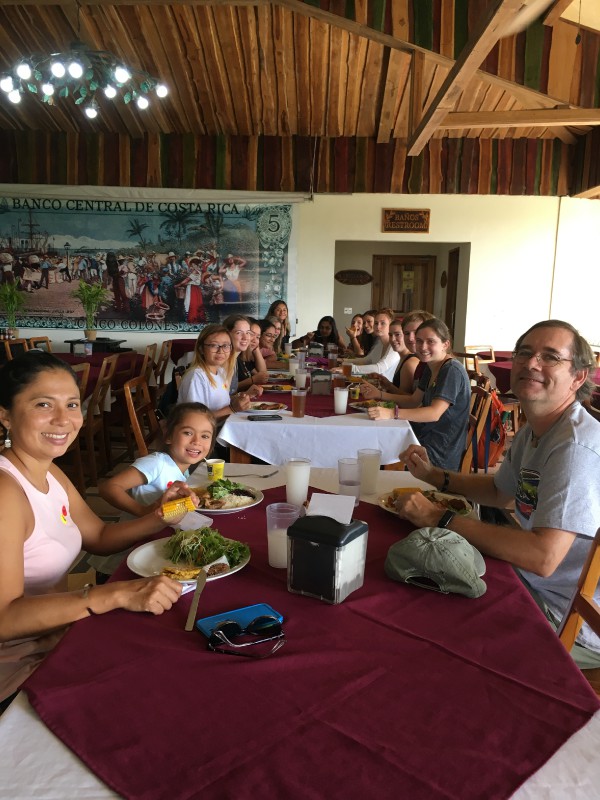
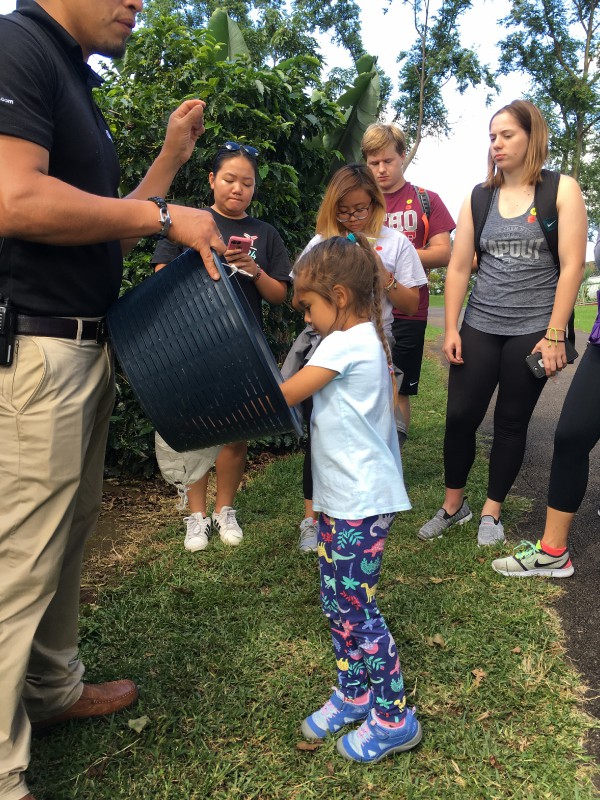
Although coffee is originally from the old world, it was introduced to Costa Rica in the mid 1700’s. The Central Valley has idea coffee growing conditions such as soil, weather, and location, among other things. Costa Rica began exporting coffee as early as 1832 to other countries like Chile and England.
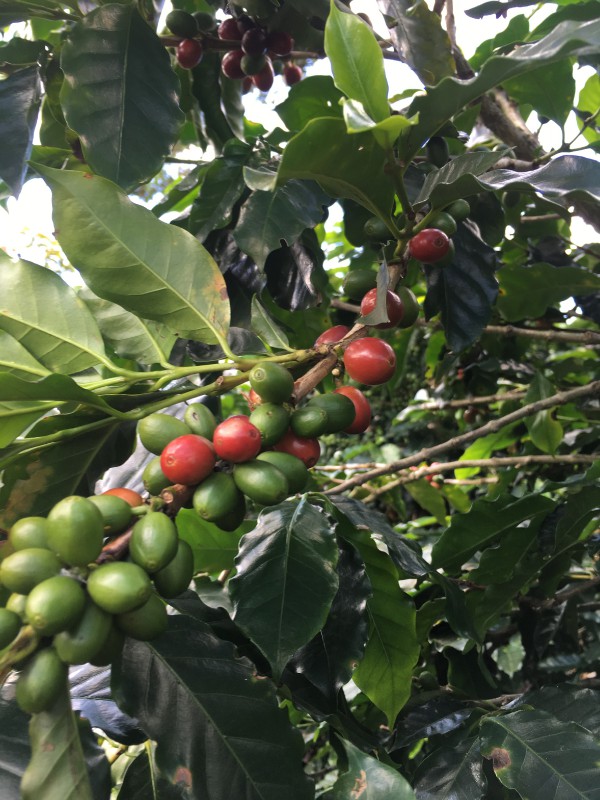
Coffee was known as the Golden Bean (grano de oro) since the revenue generated from coffee production surpassed other profitable crops like sugar cane and cacao. Some people also say it’s called the golden bean because when the coffee bean is dry it has a yellow color. The combination of the color and it being so profitable might be the reason for the nick name.
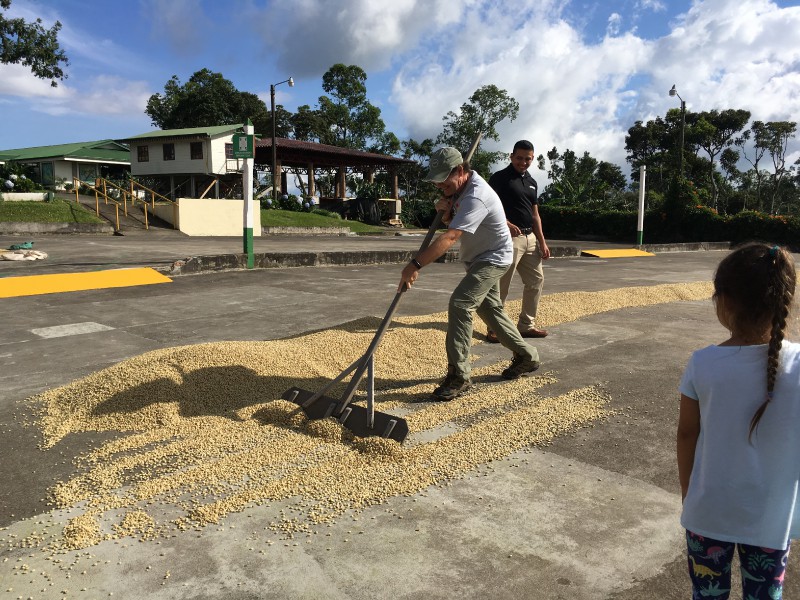
Coffee plantations and wealthy barons grew fast. This, coupled with government ties, made so that the coffee economy was a secure and lucrative venture. Today Costa Rica is one of the leading coffee producing and exporting countries in the world, its coffee ranked one of the highest in quality.
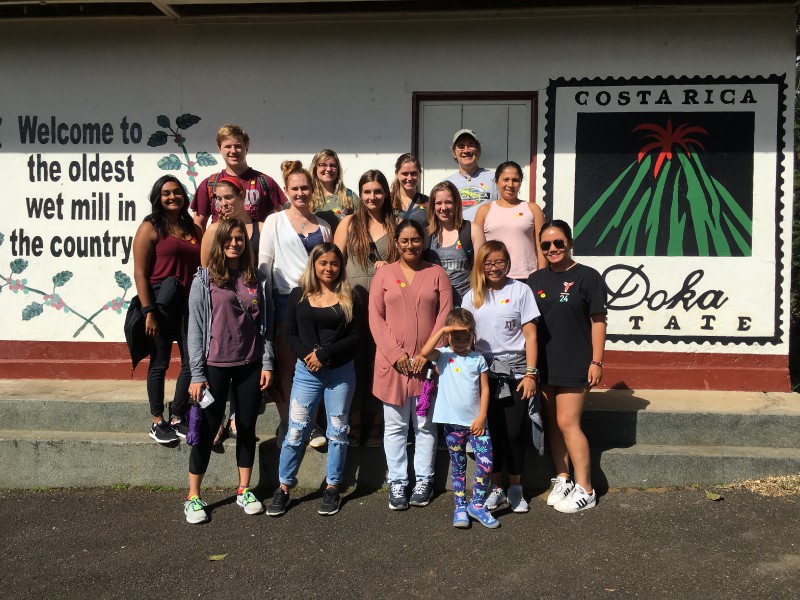
Doka started in the 1940s as a coffee plantation and as the years went by they grew into the well known coffee tour they are today. This venture is owned and operated by one family.
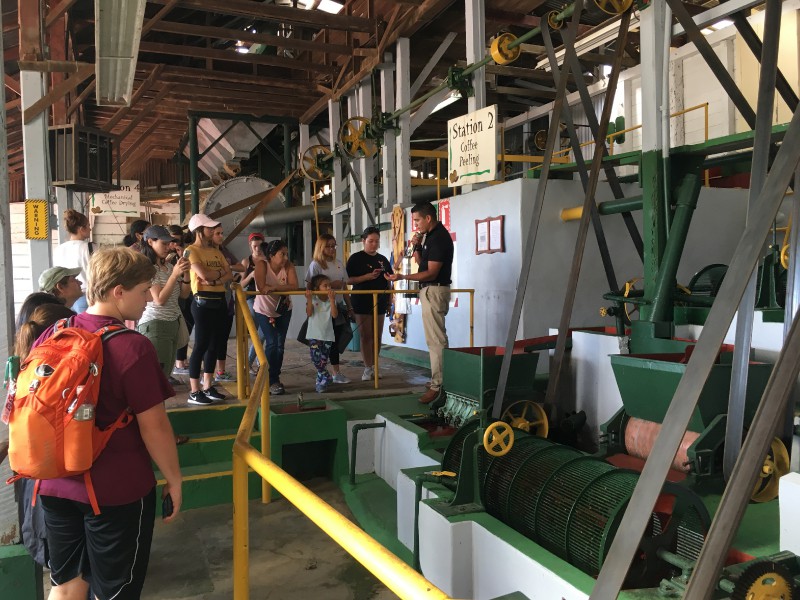
We were lucky and got to see the washing and peeling process. The washed coffee beans are sun dried and later stored in sacks until it is decided what kind of roasting is to be used to finalize the entire process.
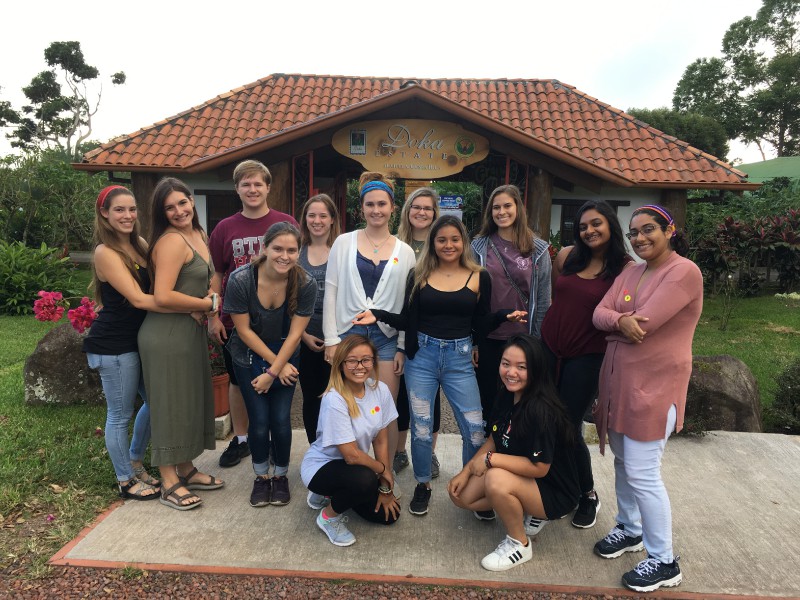
Overall it was a fun day and one we enjoyed!
That same week we had another cooking class where we learned and had fun making tortillas. Even though it seemed like many tortillas were made, they were so good they were eaten very quickly. We also ate picadillo de papa (a finely chopped and cooked potato dish). Fruit juice complemented lunch.
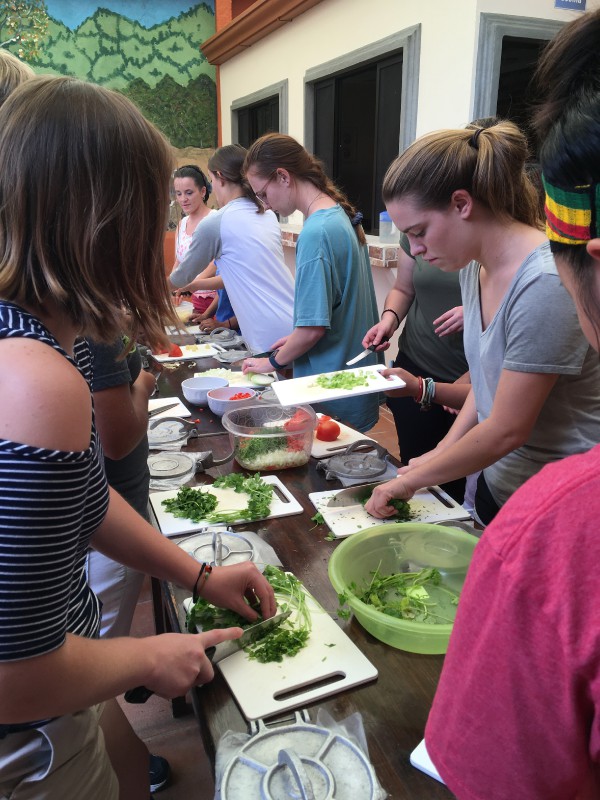
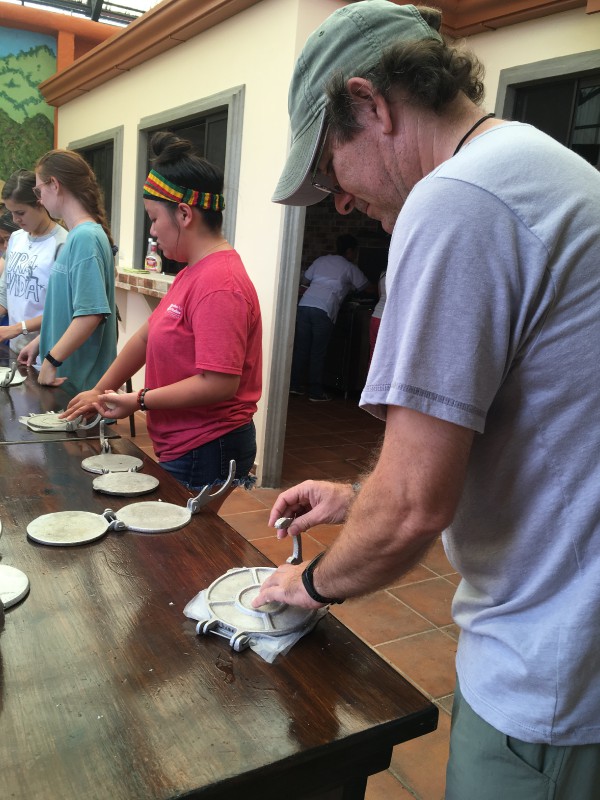
In the afternoon we had a special guest lecturer. He showed us a myriad of Costa Rican plants and talked about the medicinal properties, myths, and more or each. He also touched on the use of medicinal plants for animals. The talk was interactive and involved.
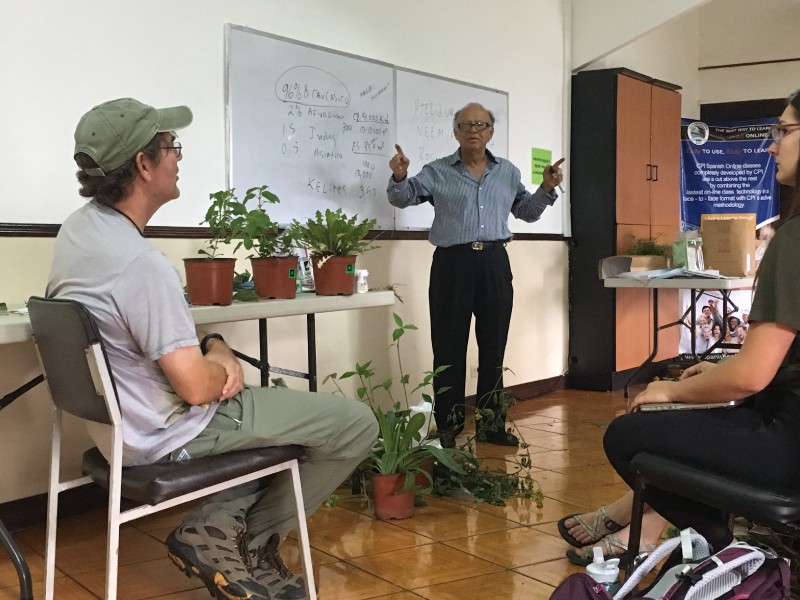
On the last weekend we had a San José city tour. We drove to San José where we were met with a local guide who showed us around the heart of the city. He told us about the beginnings of the city, the history of the early presidents, took us to the Central Market, among many other things. We got to tour the spectacular National Theater and Museum.
The final day of TAMU in Heredia dawned bright and sunny. It was time to travel to other destinations and learning opportunities. We had had a wonderful two weeks where we shared all kinds of experiences, weather, and learned about each other in our interactions. Hasta luego TAMU, until next time!
